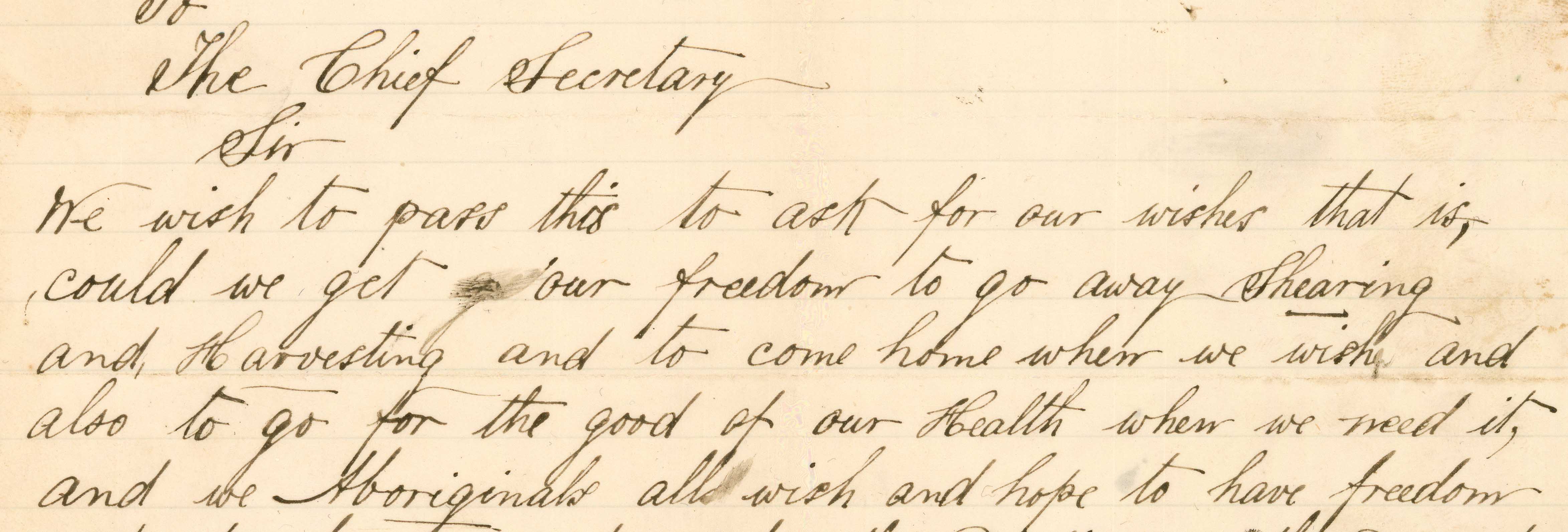Last updated:
What do I need to know?
Records in this series are grouped in general correspondence files and broadly arranged by date. Sometimes a place or topic is listed.
If you are researching a person’s name, search our Koorie Index of Names. This database will help you locate records relating to people and places in this series.
How do I search?
- Browse the record listing to locate time period of interest
- Some records relate to specific Government-run missions or reserves and can be searched using these terms (e.g. Coranderrk, Lake Tyers)
- Other records can also be searched by topic (e.g. housing, reports).
- Search this series here:
About these records
The Board for the Protection of Aborigines correspondence files are a rich resource for finding information about Victorian Government’s involvement in Aboriginal affairs between 1869 and 1957.
The Board for the Protection of Aborigines were given statutory authority by the Victorian Aborigines Protection Act 1869. The Act increased the power of the Board to intervene in the lives of Victorian Aboriginal people more so than previously.
These records relate to the operation of the Board and the management of Aboriginal missions, reserves and stations in Victoria: Coranderrk, Framlingham, Lake Condah, Ebenezer (Lake Hindmarsh), Lake Tyers and Ramahyuck.
Who created these records?
Board for the Protection of Aborigines, 1869-1957 (VA 515).
Next Steps
Once you have found records of interest to you, order them online and then view in our Reading Room.
What are in these records?
- correspondence by government officials, including Board members and the Secretary of the Board
- correspondence about supplies of goods and services
- correspondence with managers of the Aboriginal stations and reserves
- correspondence between Aboriginal people resident on, or having dealings with, the Aboriginal missions, reserves, stations and depots.
- reports to the Board from station managers
- provision of housing
- rights of residence at and visitation to the stations
- reports of events on the Aboriginal stations and depots
- details of people resident at a station
- letters and petitions from Aboriginal people.
Note: These records contain words, descriptions and information used in the past that may be insensitive or offensive and can be upsetting.
Material in the Public Record Office Victoria archival collection contains words and descriptions that reflect attitudes and government policies at different times which may be insensitive and upsetting
Aboriginal and Torres Strait Islander Peoples should be aware the collection and website may contain images, voices and names of deceased persons.
PROV provides advice to researchers wishing to access, publish or re-use records about Aboriginal Peoples
